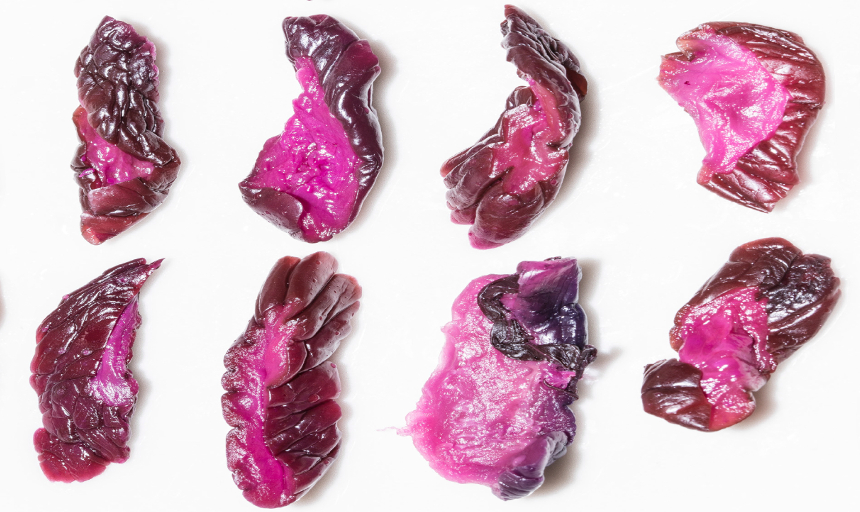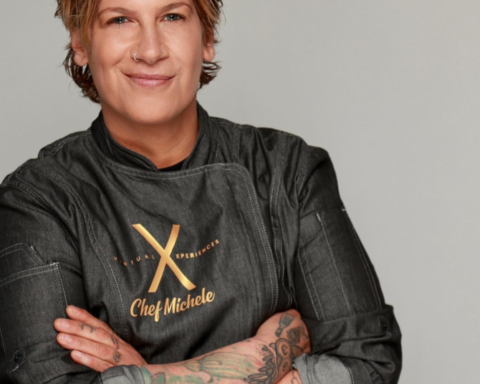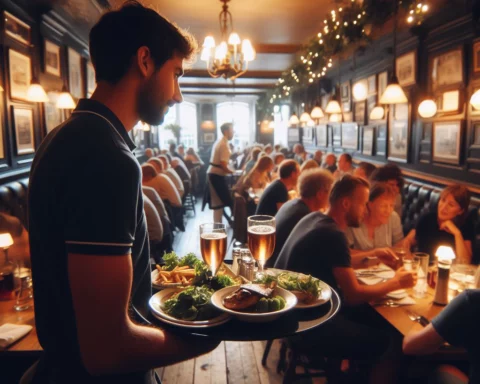Podcast (plenty): Play in new window | Download
Subscribe: RSS
Thanks for joining us for another mouthwatering helping of Plenty, the farm and table podcast that examines the people, practices, and policies that affect what goes on behind the menu and beyond the shopping list. This episode? Number 7. “Darra Goldstein Helps Ferment the Food Revolution” with the brand new journal of food preservation, CURED, from Zero Point Zero Media.

Some stories take time to tell. Maybe that’s because a main character only develops after exposure to powerful agents of change. Maybe the complexities of the plot can’t be rushed. Or the nuances of the season and the setting demand your full concentration.
Whatever the reason, when the tale is finally told, you savor it. Appreciate the multiple levels of sensory experience and subtle clues that reveal you’ve been under the spell of a master raconteur.
BONUS! Recipe from the soon to be released 1st issue of CURED
“Beetlebung Pickled Oysters“ at the end of this article!
Such is just the case with the story of the preservation of food, around the world and across time. Whether for survival or a more sophisticated dining satisfaction, humans began to unlock the mysteries of salting, fermenting, and drying plants and animals before history began. It’s a story soon to be explored authoritatively by the magazine CURED, under the leadership of renowned food maven Darra Goldstein.
CURED Magazine from DaveW on Vimeo.

We were lucky to speak with Darra as final preparations were being made for the launch of CURED. With unimpeachable cred in both the culinary and editorial worlds, she was a natural choice for position of Editor-in-Chief for this journal which, she tells us, will be a panoply of preserved food, sure, but also a contemplation of the changes that alter other elements of our world, changes that are under the command of the processes of time alone.
The author of five cookbooks, Darra is also the founding editor of the respected Gastronomica: The Journal of Food and Culture. She is also the Willcox B. and Harriet M. Adsit Professor of Russian at Williams College, where she has moved beyond her initial training in Russian language and literature to teach courses in food studies.
Goldstein’s interest in the study of food began in graduate school at Stanford. Hoping to write a dissertation on food in Russian literature, she was told that her topic wasn’t sufficiently intellectual, so she wrote instead on the Russian modernist poet Nikolai Zabolotsky. But she continued to think about the uses of food in literature and in 1983, as a newly minted Ph.D., she published her first cookbook, À la russe: A Cookbook of Russian Hospitality (now titled A Taste of Russia). The book also reflected her experience of studying and working in the Soviet Union and led to a stint as a spokesperson for Stolichnaya vodka when it was first introduced to the US—a fascinating exercise in cross-cultural communication during the Cold War.
Even if you can’t get ahold of Issue #1 of CURED for a little while, visit the website to sign up for the newsletter and stay up to date on their progress.
Goldstein has published widely on food, literature, culture, and art organizing several exhibitions, including “Graphic Design in the Mechanical Age” and “Feeding Desire: Design and Tools of the Table, 1500-2005,” both at the Cooper-Hewitt, National Design Museum. In 2015 she published the James Beard-nominated Oxford Companion to Sugar and Sweets, for which she served as Editor in Chief.
Before She Was CURED
Darra is the author of five cookbooks: A Taste of Russia (nominated for a Tastemaker Award), The Georgian Feast (winner of the 1994 IACP Julia Child Award for Cookbook of the Year), The Winter Vegetarian, Baking Boot Camp at the CIA (IACP award finalist), and, most recently, Fire and Ice: Classic Nordic Cooking, a finalist for both the James Beard and IACP awards. Other experiences include consulting for the Russian Tea Room and Firebird restaurants in New York City and serving on the Board of Directors of the International Association of Culinary Professionals. She is currently Food Editor of Russian Life magazine and Series Editor of California Studies in Food and Culture from the University of California Press.
Goldstein’s reputation extends beyond the United States. She has consulted for the Council of Europe as part of an international group exploring ways in which food can be used to promote tolerance and diversity, and under her editorship the volume Culinary Cultures of Europe: Identity, Diversity and Dialogue was published in 2005. In 2013 she was named Distinguished Fellow in Food Studies at the Jackman Humanities Institute, University of Toronto, and in 2016 has been honored with a Macgeorge Fellowship at the University of Melbourne.
One of the voices not to be missed in the first issue of CURED is that of Betty Fussell, who brings her legendary style to the magazine in “On the Trail of Tejuino and Mezcal,” for which she subjected herself to the rigors of investigative reporting. Her assignment? Go South of the Border in search of the story of some of the world’s most ancient drinks.

Excerpt from “On the Trail of Tejuino and Mezcal”
Instead of tejuino, Migue wants to talk about movies and hats. From stacked hatboxes, he pulls out a vintage Stetson Stratoliner, which he prizes as much as a Buñuel movie. He is a scholar of both. Behind his spectacles, his eyes are warm, intelligent, perceptive, haunted. “Tejuino,” he says, “is my deepest, most personal self. Not science or technology, but my life work as a master tejuinero. It has taken me a lifetime to accept this destiny instead of being the writer I’d wanted to be.” Tejuino, in effect, cured Migue’s life, underlining the ancient connection: To ferment is to cure.
Migue’s cure begins with his grandfather Juan, who in the ’40s was fired from his job at the airport and by chance met a guy selling tejuino from a cart. As they became friends, Juan watched him make his brew. The first day he got his own cart, he ran out of drink when he got to Calle Belén. The next day he returned to the same place and stayed put. Soon his cart became a shop.
“Curing may be suddenly cool, but it’s the farthest thing from a fad,” says CURED editor-in-chief Goldstein. “Its methods trace back thousands of years, to a time when preserving food was crucial for survival. And talk about global. Myriad preservation techniques arose independently across the world, making us wonder how the ideas were planted. Also fascinating is how curing transcends the culinary, reaching both literally and metaphorically into art, fashion, and of course science.”
CURED is the first periodical to explore how age-old methods like charcuterie making, pickling, and fermenting inform the way we think about and consume food today. The inaugural issue will cover topics ranging from the anthropological ( Christmas pickle ornaments) and culinary ( fermentation-themed restaurants) to health + wellness ( gut microbiota), alongside feature stories by esteemed contributors like Bronwen Percival, Steven Rinella, Charles Perry, and Betty Fussell, the doyenne of food writers, who penned a piece on tejuino, the Mexican fermented corn drink. Rounding out the editorial tea m are longtime Gourmet editor Jane Lear, who joins Goldstein to serve as the magazine’s executive editor, and Zero Point Zero’s VP of Editorial, Richard Martin.
“We’re honored to have Darra as editor-in-chief of our first ever magazine,” says Joe Caterini, the Publisher of Cured and Managing Director & Partner at Zero Point Zero. “ CURED will be an extension of what ZPZ is known for — creating inspiring content for passionate people. We believe print continues to play an important role in today’s media landscape and we look forward to adding CURED to ZPZ’s portfolio of TV, film and digital media.”
Goldstein’s art and design perspective will also heavily influence the pages of CURED, which will feature hand drawn illustrations and beautiful photography that brings to life the processes behind curing and fermentation. Zero Point Zero’s award-winning graphics team, led by Emmy award winners Mike Houston and Daniel de Graaf, who serve as CURED’s art directors, are working closely with Goldstein to create a distinctive look and point of view for CURED and ensure a publication that will be referenced, used, savored, and saved.
The Launch Advertiser for CURED is specialty foods brand Volpi Foods , who specializes in crafting cured meats and snacks according to their family recipes in St. Louis, MO.
Beetlebung Pickled Oysters
• Our thanks to CURED for making this recipe available to the Greylock Glass •
Makes 36
Active time: about 1 hour
Curing time: 12 to 24 hours

Early recipes for pickled oysters call variously for white (distilled), cider, or white-wine vinegar. The quality of the vinegar is all-important. In Miss Leslie’s New Cookery Book, published in Philadelphia in 1857, Eliza Leslie offers lively commentary on how to pickle oysters. Her first recipe, for immediate eating, recommends adding powdered cochineal to tinge the oysters pink. The second instructs how to pickle oysters for keeping.
PICKLED OYSTERSTake a hundred fine large oysters—set them over the fire in their own liquor—add two ounces of nice fresh butter, and simmer them slowly for ten minutes; skimming them well. If they boil fast and long, they will become hard and shrivelled. Take them off the fire and strain from them their liquor; spread the oysters out on large dishes, and place them in the air to cool fast, or lay them in a broad pan of cold water. This renders them firm. Strain the liquor, and then mix with it an equal quantity of the best and purest clear cider vinegar. Season (if the oysters are fresh,) with a small tea-spoonful of salt, two dozen whole pepper-corns, and a table spoonful of powdered mace and nutmeg, mixed. Let the liquor boil till it is reduced to little more than enough to cover the oysters well. Put the oysters into a tureen, or a broad stone jar. Pour the hot liquor over them, and let them grow quite cold before they are eaten. You may give them a fine tinge of pale pink color by adding to the liquor (while boiling,) a little prepared cochineal. PICKLED OYSTERS.—For keeping.—Have five or six hundred oysters of the finest sort and largest size. Proceed as in the foregoing receipt, but increase, proportionately, the quantity of spice and vinegar. Put them in stone-ware jars, securing the covers by pasting all round, bands or strips of thick white paper; and place on each jar, on the top of the liquor, a table-spoonful of salad oil. Use no other than genuine cider-vinegar. Much that is sold for the best white-wine vinegar is in reality a deleterious compound of pernicious drugs, that will eat up or dissolve the oysters entirely, leaving nothing but a sickening whitish fluid. This vinegar is at first so overpoweringly sharp and pungent, as to destroy, entirely, the taste of the spices; and, while cooking, emits a disagreeable smell. The oysters immediately become ragged, and in less than an hour are entirely destroyed. This vinegar acts in the same manner on all other pickles, and the use of it should always be shunned. Drugs should not be employed in any sort of cookery, though their introduction is now most lamentably frequent. They ruin the flavor and are injurious to health. |
Chris Fischer named these oysters for Beetlebung Farm in Chilmark, Massachusetts, where three generations of his family have enjoyed cooking as much as growing. He tried pickling with mace but found the clean, briny taste of plump pickled oysters better without it. The oysters will keep for up to a week in the refrigerator in a covered container.
Alternatively, you can drain the pickled oysters, layer them in a jar with sliced shallots, lemons, cucumbers, mint, and fresh dill, then season with salt and pepper and cover with olive oil. The oil-packed oysters will keep, refrigerated, for at least two weeks. Serve the pickled oysters on crostini. 3 dozen fresh oysters, shucked, liquor reserved 1 small shallot, peeled and thinly sliced (2 to 3 tablespoons) 1 bay leaf Scant ¼ teaspoon crushed red pepper ½ teaspoon whole coriander seed ¼ teaspoon black peppercorns ½ teaspoon kosher salt About 6 tablespoons white (distilled) vinegarPlace the shucked oysters in a small saucepan. Pour the reserved liquor into a liquid measuring cup and let it settle for 5 minutes. You should have about 1 cup (the amount will vary, depending on the oysters). Decant the liquor through a fine sieve into the pan with the oysters, leaving the grit behind. Warm the oysters in the liquor over medium heat, without simmering, for 3 to 5 minutes, until they become opaque and have plumped up. With a slotted spoon remove the oysters from the liquid and place them in a Mason jar or crock. Reserve the liquid.Add the shallot, bay leaf, red pepper, coriander, black peppercorns, and salt to the oyster liquor remaining in the pan. Stir in the vinegar and taste— the mixture should be nicely vinegary. If it’s not, add another tablespoon of vinegar. You can expect to use about 1 part vinegar to 4 parts liquor. Bring this pickling liquid to a boil. Let it bubble for a minute or two, then remove it from the heat and let it cool. Pour the cooled liquid over the oysters, cover, and refrigerate for at least 6 hours, though they taste best after 12 to 24. If you have extra pickling liquid—more than you need to cover the oysters— you can use it to pickle clams or mussels. |
About Zero Point Zero Media
Zero Point Zero is an award-winning independent media company focused on deeply understanding our audiences. We use that connection to tell stories, build brands and collaborate with select partners to distribute premium content, products, and experiences.
Through award-winning media properties like Anthony Bourdain: Parts Unknown, MeatEater, Food Republic and The Mind of a Chef, we have inspired a global generation of knowledgeable enthusiasts that seek out cultural, travel, and culinary adventures around the world.
“Our brands engage and inspire millions of people every month, cultivating unsurpassed loyalty from our audiences. Zero Point Zero has produced stories in over 90 countries over the last 10 years, and has been awarded for the ability to dig beneath the surface, bringing forward real, intimate, and unique stories that resonate with viewers.”
Thus far, Zero Point Zero’s productions have garnered 56 Emmy nominations with 16 wins, seven James Beard Nominations, including three straight wins for The Mind of a Chef, and one Peabody Award.




![By Toby Hudson (Own work) [CC BY-SA 3.0 or GFDL], via Wikimedia Commons](https://www.greylockglass.com/wp-content/uploads/2016/09/cantaloupesjpg.jpg)




